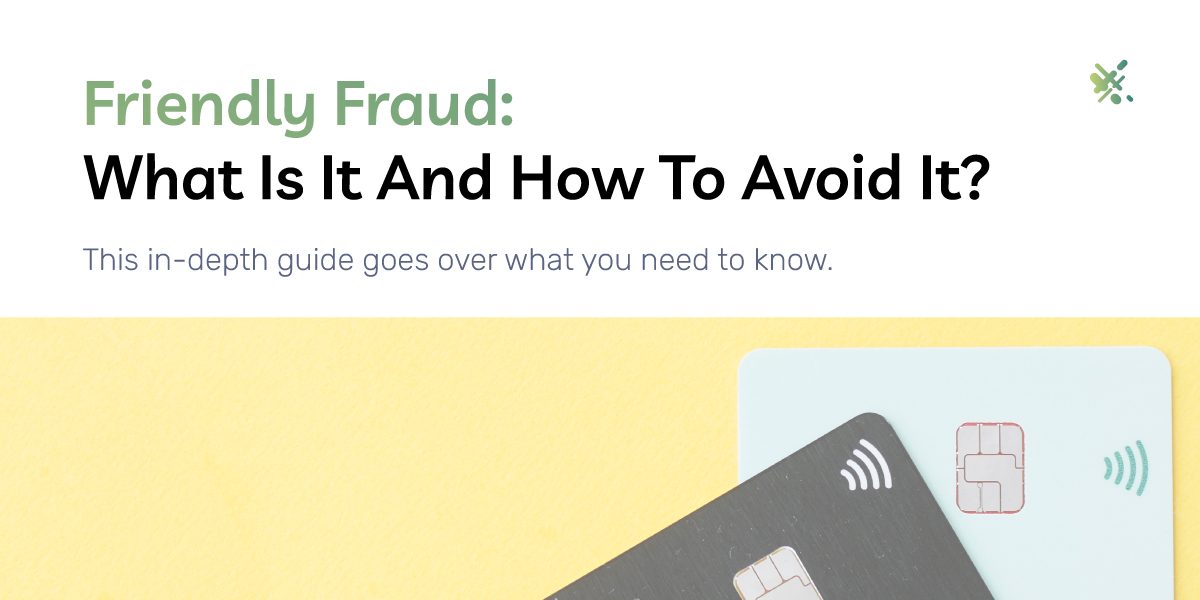Whether you’re a new merchant or have been in business for years, credit card fraud must always be a top priority when it comes to protecting your business.
Credit card fraud costs merchants billions of dollars per year and can drain their bottom lines, especially for smaller businesses that may not be able to absorb the added costs and fees.
One of the newer forms of fraud on the rise is friendly fraud. Despite its friendly name, friendly fraud has become a real problem for merchants, and dealing with it can be difficult.
To help you understand how friendly fraud works and how to prevent it, we’ll cover the basics of this new type of fraud and how it relates to chargebacks.
By the end of the article, you’ll have the information you need to protect your business and reduce your overall expenses.
What Is Friendly Fraud?
When most people think of credit card fraud, they think of criminal activity such as hacking or the theft of credit card information. Criminals then use the stolen credit information to make fraudulent purchases.
With friendly fraud, no criminal or hacker is involved. The card owner initiates the chargeback for their own reasons.
Because the card owner initiates the chargeback, friendly fraud is also referred to as first-party fraud since a third-party criminal or hacker is not involved.
Friendly fraud can result from intentional fraud by the cardholder. In these cases, the cardholder authorized the transactions processed but will dispute the charge to receive a refund.
However, friendly fraud can also occur for innocent reasons. For example, the cardholder simply doesn’t recognize the charge or doesn’t remember it.
In either case, the result is generally the same. The customer files a chargeback, and as a merchant, you have to respond to it and decide whether to contest it, which can be time-consuming, or simply accept the loss and move on.
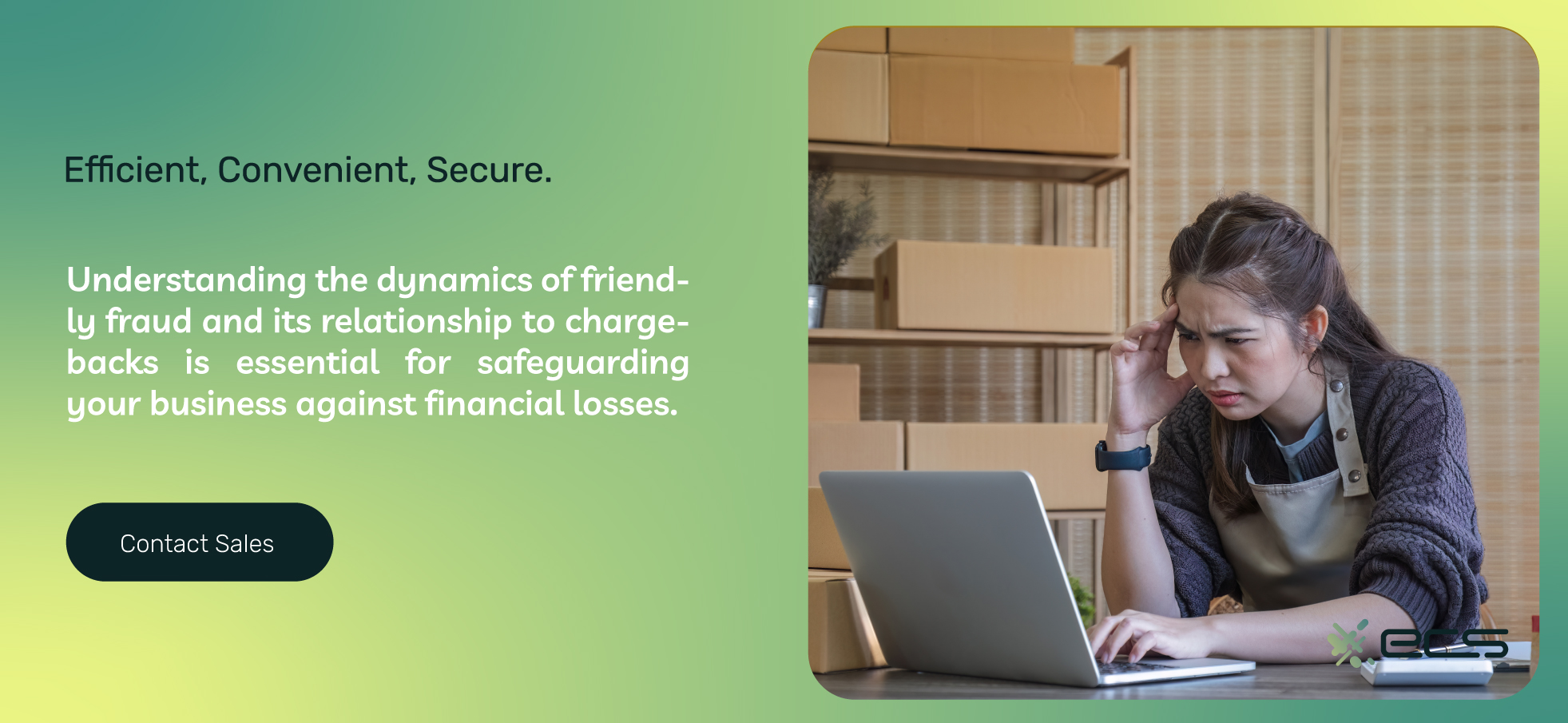
Real Word Examples Of Friendly Fraud.
To help you understand friendly fraud, we’ll review some real-life examples common in retail and e-commerce settings.
Unrecognized charge
An unrecognized charge can happen if your customer makes a purchase but doesn’t recognize it on their credit card statement.
For example, your customer purchases an item via your e-commerce store. A few weeks later, they initiated a chargeback, claiming they didn’t recognize the charge.
This would be an example of unintentional friendly fraud since the customer makes an honest mistake and doesn’t recall the charge.
This can happen if you do business under a different name than your billing descriptors, which are what the customer sees on their statements.
A mismatch of descriptors or doing business under a different name can cause customers to not recognize charges and try to reverse them.
Buyer’s Remorse
Another common reason for friendly fraud is if your customer has buyer’s remorse and simply wants their money back.
An example of this would be if your customer orders a new custom computer system but then realizes they can’t afford it and that it wasn’t a wise purchase.
Instead of trying to return the item, they claim it was defective, unsatisfactory, or possibly never delivered.
This is an example of intentional friendly fraud; your customer is trying to use the chargeback system to their advantage.
This type of intentional friendly fraud can be difficult to contest because the customer generally admits to having ordered the product.
This can create difficulty for you as a merchant, as each side can have equal evidence, and banks and credit card companies generally side with customers.
Digital Downloads & Services
Digital downloads are another area where merchants can experience friendly fraud.
Beyond just digital downloads, friendly fraud is also common with digital services like subscriptions or SaaS (Software as a Service)
Friendly fraud in the context of digital goods or services occurs when the customer claims the service or download was not delivered as intended.
Their goal is to achieve a refund even though they have already obtained the product or used the service for what they needed.
An example is if you sell digital downloads of an e-book you created. Your customers can purchase the e-book, then download it and copy it.
Afterward, they initiated a chargeback and claimed the book had never been delivered.
This type of friendly fraud can be difficult to dispute if you don’t use certain technology to ensure delivery confirmation.
What’s A Chargeback Dispute?
A key component of friendly fraud is a chargeback. Friendly fraud takes advantage of the chargeback system, so it’s important that you understand how chargebacks work. This way, you can protect yourself as best as possible.
A chargeback dispute is when a customer contacts their issuing bank and refutes a charge on their credit or debit card.
The issuing bank (issuer) is the financial institution that provides the card to the customer and where that customer banks. As a side note, a credit card chargeback differs from a vendor chargeback, which involves invoicing and not credit card disputes.
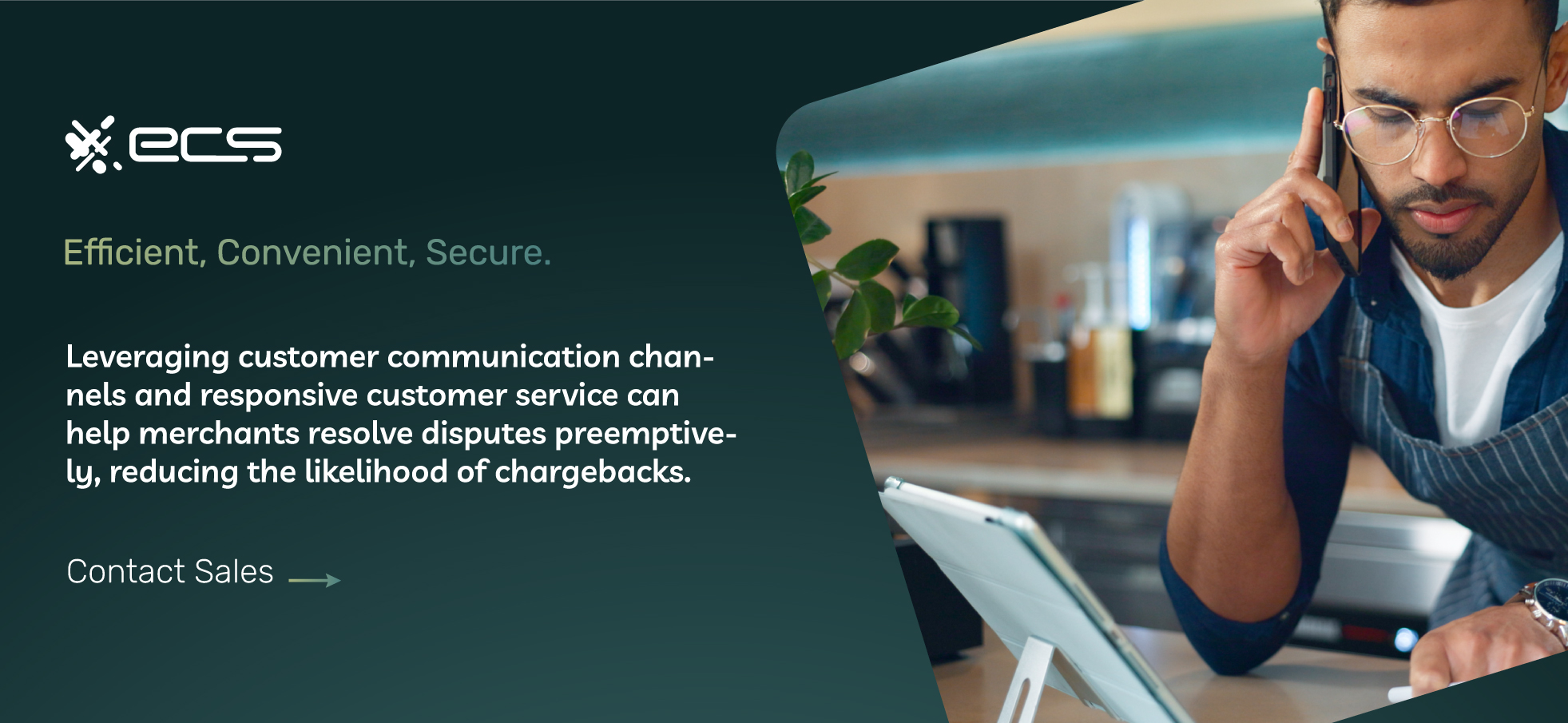
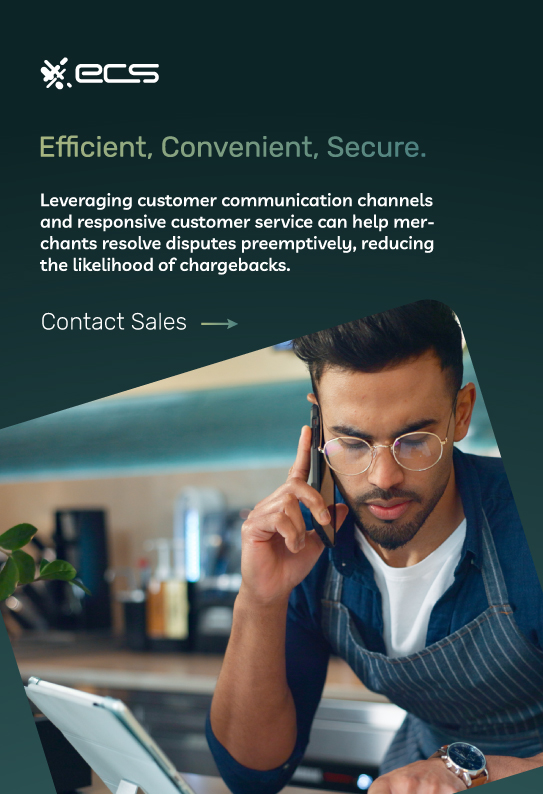
What Is Chargeback In Payments?
A chargeback is a specific term used in payment processing. It refers to a transaction that a customer is disputing through their issuing bank.
What Does A Chargeback Mean In Banking?
Sometimes, the issuing bank can initiate a chargeback without the customer first making a complaint. This can happen if the bank suspects fraud or otherwise questions the validity of the charge on behalf of a customer.
Navigating The Chargeback Process
Once the customer initiates a chargeback, you will receive a notification that the process has started.
Your acquiring bank or payment processor will deduct the chargeback amount from your current merchant account balance or rolling reserve.
At that point, you can choose to accept the chargeback or refute it. If you refute the chargeback, you are “representing” it.
After notification, you must respond with your choice. If you do not respond, you can face penalties and additional fees besides the original chargeback fee and if you accept the chargeback, you settle the matter and allow the customer to keep the funds.
However, if you decide to challenge or represent the chargeback, you must supply a rebuttal letter and your supporting evidence that it was a legitimate charge.
Once you submit your letter and evidence, the issuing bank will review it and make their determination.
When the issuing bank decides, you can either accept it or request arbitration through the card network. However, if you lose, arbitration can cost hundreds of dollars in additional fees.
As you can see by this explanation of the chargeback process, the key to representing and fighting chargebacks is your evidence.
Types Of Chargebacks
Different chargeback reason codes specify the basis for a chargeback. Understanding these codes can help you better resolve the issue.
However, these codes are designed for legitimate chargebacks. For example, one card network may have a code for “quality discrepancy.”
The problem is that friendly fraud is a type of fraud, so the reason code you receive is not always accurate.
But they can help you in a chargeback dispute, meaning you will have some idea of what the customer is attempting to claim.
How To Avoid Friendly Fraud & Chargebacks
A key element of chargebacks is that even if you successfully challenge one, you still pay the chargeback fee, and the chargeback counts toward your overall chargeback ratio.
This means that you should focus on friendly fraud prevention instead of fighting every chargeback. Prevention will save you far more time and money than challenging chargebacks once they occur.
Below, we’ll offer some best practices to avoid the most common forms of friendly fraud we outlined earlier.
Offer Clear Product Descriptions
When you describe your products or services, ensure you provide full details of what they include and do not.
This also applies to any fees, ongoing costs, or subscriptions once the customer makes the initial purchase.
Often, non-disclosed items or fees can lead to a customer’s sense of dissatisfaction, and they will initiate a chargeback instead of trying another method of resolution.
Finally, if possible, disclose all return policies on the product page and the checkout page. This is especially true for custom items or items for which you do not offer returns.
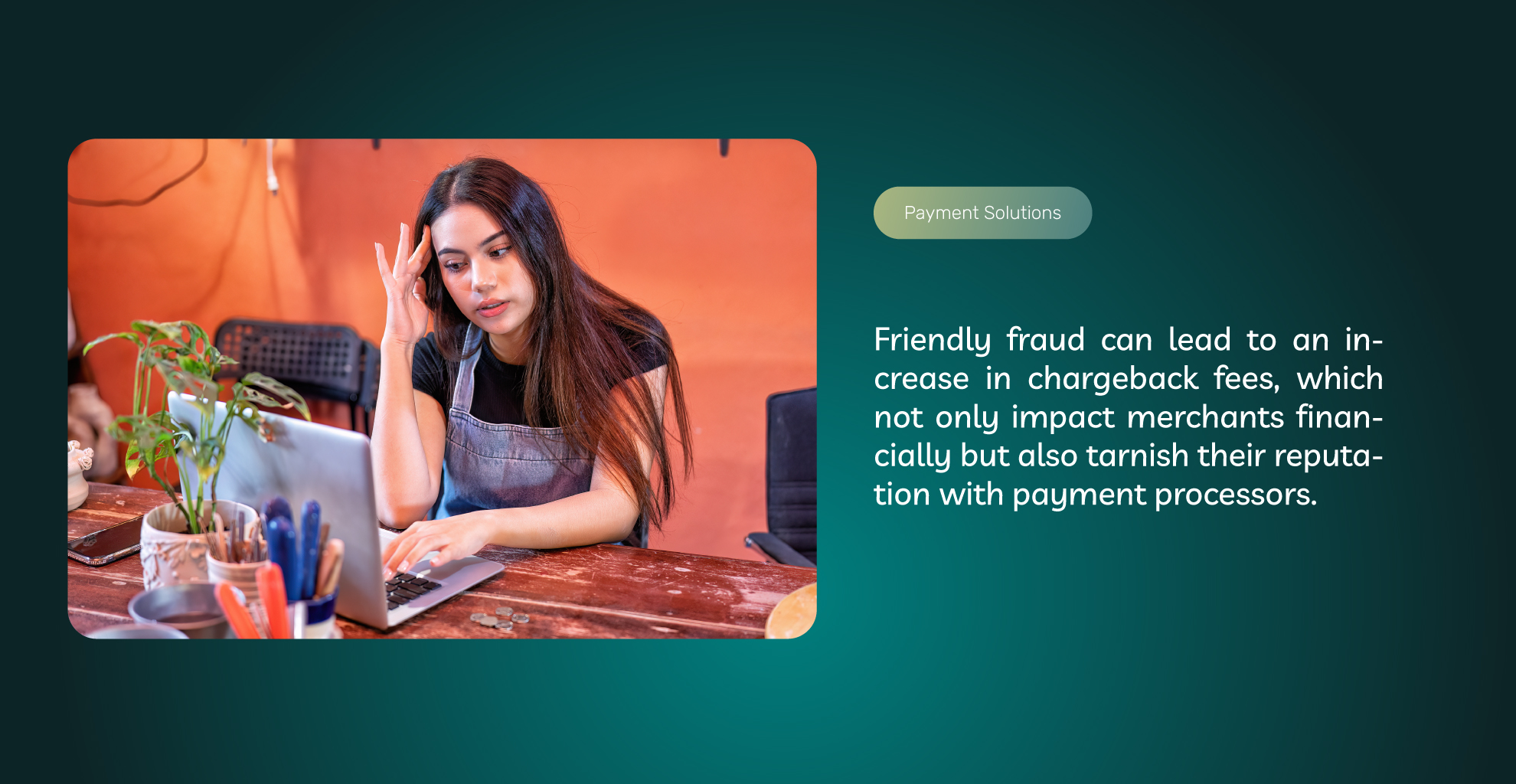
Use Accurate Billing Descriptors
Sometimes, friendly fraud can occur when a customer doesn’t recognize the transaction amount on their credit card statement even though they made it.
If you are doing business under a different name than your merchant descriptor, it is confusing for customers since they won’t recognize the source of the credit card transactions.
You want to ensure that your billing descriptors are as accurate and clear as possible. You’ll need to contact your acquiring bank or payment processor to change your descriptors.
Work with your payment processor to determine the best descriptors for your business and what to include to prevent confusion and chargebacks.
If possible, include your retail or e-commerce name in the descriptor. If you have to shorten it, ensure the shortened version still makes sense and clearly represents your full business name.
Overall, accurate billing descriptors help present many forms of chargebacks, so it’s a good practice even if you’re not currently dealing with friendly fraud issues.
Tracking & Delivery Confirmation
Today, most customers don’t want to sign for smaller packages or low-cost items. The inconvenience simply isn’t worth it for the peace of mind.
However, for larger purchases or custom items, you should consider requiring signed delivery confirmation from the customer.
A signed delivery confirmation can help you represent chargebacks or friendly fraud in which the customer claims the item never arrived. These cases are generally labeled as merchant error chargebacks.
Based on your business and metrics, you’ll need to decide which products should require a signed delivery confirmation. Your analytics should generally confirm which items are most prone to friendly fraud or chargebacks.
Customer Communication
You want to communicate clearly with your customers at every step of the purchase. Today’s automation tools, available to e-commerce retailers or those using a POS system, make this easy to implement.
Send a confirmation when an order is placed. This confirmation should also include contact information if the customer needs to cancel the order.
Send an additional email when the item ships. This email should include tracking information and other delivery details.
Finally, include a confirmation after delivery so the customer knows to be on the lookout for the package.
Responsive Customer Service
Your website should display how customers can contact your business if they have an issue. You should also be as responsive as possible to requests.
Delaying responses to customers can often lead them to feel their only option is a chargeback. By staying in communication with a customer, you can prevent a chargeback and find another resolution to save you money.
In addition, offering refunds or exchanges is generally more cost-effective than standing firm and letting the issue move on to a chargeback.
Send Renewal Notices
For subscription or membership services, always send a notice before a recurring charge is scheduled to go to the customer’s payment card.
If a customer plans on canceling, the notice will allow them to cancel normally. If you don’t send a notice, the customer may use that evidence during their chargeback for the renewal.
Also, if the customer is unable to cancel or forgets to cancel, they sometimes try to charge back for more than just that month or billing period. It is difficult to dispute transactions like this once a chargeback has begun.
It’s always good business to send a renewal notice to a customer to avoid a chargeback or friendly fraud for past billing periods.
Tips To Prevent Chargebacks & Other Types of Fraud
You can take action steps to minimize your exposure to friendly fraud. However, by following merchant best practices, you can also reduce your overall fraud risk and chargeback ratio.
Below are some tips to help you reduce your overall risk of fraud and chargebacks.
Use Fraud Detection Tools
Your payment processor and your payment gateway provide tools and filters to help you recognize fraud before the transaction goes through.
These tools can include IP filters, location filters, and machine learning algorithms to detect anomalous or fraudulent activity.
Customize these tools for your specific situation and business. Prevention is always the best medicine when it comes to fraud and chargebacks.
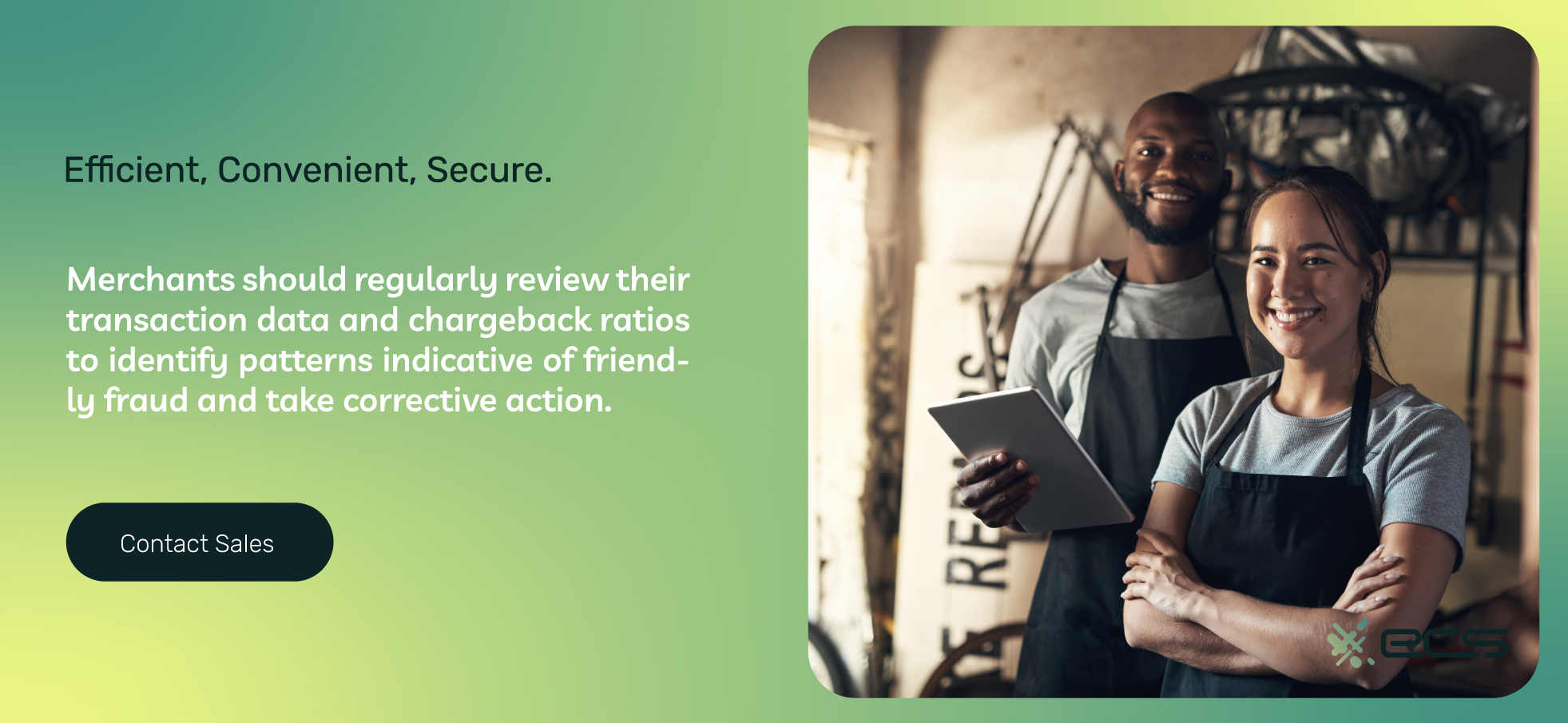
Use Analytics & Perform Audits
Your sales and payment analytics will provide insights into which customers and items are causing you the most chargeback or losses due to fraud.
When you keep a close eye on these metrics, you can better implement measures before the problem gets out of control.
Consider A Chargeback Solution Service
If you are in a high-risk industry or have been the target of increased fraud, you can consider using a chargeback solution service.
These services provide software and other tools in addition to your standard merchant tools for fraud detection.
Depending on your situation, these can provide a necessary extra layer of fraud detection that helps you prevent friendly fraud and excessive chargebacks, which have various negative impacts, including lost time and funds, and can threaten your merchant account.
Build A Relationship With Your Payment Processor
Your payment processor should be a technology partner that you can turn to for advice and help when fighting fraud.
The right payment processor can offer tips on configuring your merchant workflow to prevent fraud. They can also help keep you informed regarding the latest trends in fraud and fraud detection.
If you are experiencing an increase in friendly fraud and your payment processor hasn’t reached out to assist you, it may be a sign to consider a new payment processor willing to work with you more closely.
Learn More About Friendly Fraud Prevention For Merchants
According to Visa, over 70% of chargebacks and fraud are now the result of friendly fraud. Don’t let this growing problem threaten your revenue and your merchant account.
At ECS Payments, we offer merchants the latest fraud detection tools and merchant services so they can reduce their losses from friendly fraud.
We also work with our merchants individually to ensure they use all the tools at their disposal to prevent fraud before it even happens.
Contact ECS Payments today and speak with one of our fraud experts to learn more about friendly fraud prevention.
Frequently Asked Questions About Friendly Fraud
Friendly fraud isn’t fraud at all, but rather when a cardholder initiates a dispute on their credit card with the merchant by claiming fraud on a legitimate transaction. Friendly fraud is often intentional, but sometimes it can be unintentional, meaning the cardholder forgot they authorized a certain transaction.
Friendly fraud can occur from unrecognized charges, buyer’s remorse, the intention of buying something but not wanting to pay for it, or even not attempting to cancel a subscription service to avoid the hassle and simply dispute the next charge on their account.
Some best practices to avoid friendly fraud for your business include providing clear product and service descriptions, accurate and detailed billing descriptors, tracking and delivery confirmation, and maintaining open and easy communication with your customers.
A chargeback occurs when a cardholder initiates a dispute on a card transaction with their issuing bank. If the bank agrees that the dispute seems valid, it will initiate a chargeback to the merchant and forcibly deduct the amount in question.
From there, the merchant will be notified, and they can either fight the chargeback by providing evidence that the transaction is authorized and legitimate or let the chargeback go through. In either case, the final decision is up to the cardholder’s bank, and the merchant is charged a fee for the chargeback regardless of the authenticity of the transaction.
